- Home
- Frederick Douglass
Two Slave Rebellions at Sea
Two Slave Rebellions at Sea Read online
THE HEROIC SLAVE
FREDERICK DOUGLASS
The Heroic Slave
A CULTURAL AND CRITICAL EDITION
Edited by
ROBERT S. LEVINE,
JOHN STAUFFER, AND
JOHN R. McKIVIGAN
Published with assistance from the National Historical Publications and Records Commission.
Published with assistance from the Louis Stern Memorial Fund.
Copyright © 2015 by Yale University. All rights reserved.
This book may not be reproduced, in whole or in part, including illustrations, in any form (beyond that copying permitted by Sections 107 and 108 of the U.S. Copyright Law and except by reviewers for the public press), without written permission from the publishers.
Yale University Press books may be purchased in quantity for educational, business, or promotional use. For information, please e-mail [email protected] (U.S. office) or [email protected] (U.K. office).
Printed in the United States of America.
Library of Congress Cataloging-in-Publication Data
Douglass, Frederick, 1818–1895.
The heroic slave / Frederick Douglass ; a cultural and critical edition ; edited by Robert S. Levine, John Stauffer, and John R. McKivigan.
pages cm
Includes bibliographical references.
ISBN 978-0-300-18462-4 (pbk. : alk. paper) 1. Washington, Madison—Fiction. 2. Slaves—United States—Fiction. 3. Creole (Brig)—Fiction. 4. Slave insurrections—United States—History—19th century—Fiction. 5. Mutiny—United States—History—19th century—Fiction 6. Douglass, Frederick, 1818–1895 Heroic slave. I. Levine, Robert S. (Robert Steven), 1953– editor. II. Stauffer, John, 1965– editor. III. McKivigan, John R., 1949– editor. IV. Title.
PS1549.D66H47 2015
813'.3—dc23 2014029869
A catalogue record for this book is available from the British Library.
This paper meets the requirements of ANSI/NISO Z39.48–1992 (Permanence of Paper).
10 9 8 7 6 5 4 3 2 1
Contents
Acknowledgments
Introduction
PART 1: THE TEXT OF FREDERICK DOUGLASS’S THE HEROIC SLAVE
Frederick Douglass, The Heroic Slave
A Note on the Text
PART 2: CONTEMPORARY RESPONSES TO THE CREOLE REBELLION, 1841–1843
“Another Amistad Case—What Will Grow Out of It?”
“The Creole Mutiny”
Protest of the Officers and Crew of the American Brig Creole
“The Hero Mutineers”
Deposition of William H. Merritt
“Madison Washington: Another Chapter in His History”
Daniel Webster, Letter to Edward Everett
William Ellery Channing, from The Duty of the Free States, or Remarks Suggested by the Case of the Creole
Joshua R. Giddings, Resolutions
Henry Highland Garnet, from “An Address to the Slaves of the United States of America”
PART 3: DOUGLASS ON THE CREOLE AND BLACK REVOLUTION
Frederick Douglass, from “American Prejudice against Color”
Frederick Douglass, from “America’s Compromise with Slavery and the Abolitionists’ Work”
Frederick Douglass, from “American and Scottish Prejudice against the Slave”
Frederick Douglass, from “Meeting in Faneuil Hall”
Frederick Douglass, from “Address at the Great Anti-Colonization Meeting in New York”
Frederick Douglass, from “What to the Slave Is the Fourth of July?”
Frederick Douglass, from “West India Emancipation”
Frederick Douglass, “A Black Hero”
PART 4: NARRATIVES OF THE CREOLE REBELLION, 1855–1901
William C. Nell, “Madison Washington”
Samuel Ringgold Ward, “Men and Women of Mark”
William Wells Brown, “Slave Revolt at Sea”
Lydia Maria Child, “Madison Washington”
Robert Purvis, “A Priceless Picture: History of Sinque, the Hero of the Amistad”
Pauline E. Hopkins, “A Dash for Liberty”
PART 5: CRITICISM
Robert B. Stepto, from “Storytelling in Early Afro-American Fiction”
William L. Andrews, from “The Novelization of Voice in Early African American Narrative”
Richard Yarborough, from “Race, Violence, and Manhood”
Maggie Montesinos Sale, from “The Heroic Slave”
Celeste-Marie Bernier, from “‘Arms like Polished Iron’”
Ivy G. Wilson, from “Transnationalism, Frederick Douglass, and ‘The Heroic Slave’”
Carrie Hyde, from “The Climates of Liberty”
Chronology of Frederick Douglass, Madison Washington, and Resistance to Slavery
Selected Bibliography
Acknowledgments
For their assistance with documents and images, we would like to thank the Harvard University librarians Emily Bell (in Government Documents), Gregory Eow (Widener Library), and Peter Accardo (Houghton Library); the University of Maryland librarian Patricia Herron; and the knowledgeable staff at the Library of Congress. For their helpful suggestions along the way, we are grateful to Celeste-Marie Bernier, Deborah Cunningham, David Brion Davis, Henry Louis Gates, Jr., Howard Jones, Jim Oakes, Robert Paquette, Manisha Sinha, Robert Stepto, and Zoe Trodd. Offering crucial assistance with the text of The Heroic Slave, which was developed at the Frederick Douglass Papers at Indiana University–Purdue University Indianapolis, were Eamonn Brandon, Kate Burzlaff, James A. Hanna, and Rebecca Pattillo. Their work was supported by the National Historical Publications and Records Commission and the Indiana University School of Liberal Arts at Indianapolis. Robert S. Levine did much of his work on the edition while a Guggenheim Fellow, and he is grateful for the support of the Guggenheim Foundation. For their encouragement and advice, we are pleased to thank Sarah Miller, Heather Gold, and Margaret Otzel, our editors at Yale University Press. Our thanks as well to the Press’s anonymous readers and to our skillful copy editor, Kip Keller.
Introduction
On 25 October 1841, the slave ship Creole left Richmond, Virginia, for New Orleans, the largest slave-trading market in North America. The brig carried 13 sailors and crew, 6 white passengers, numerous boxes of tobacco, and 135 slaves, worth about $100,000 (around $3 million in 2014 currency). Eight days later, as the Creole sailed through the northern Bahamas, 19 slaves rose up in revolt. Within a few hours they had taken control of the ship and forced a crewman to sail the brig to the Bahamas. They put into port on New Providence at Nassau, the largest settlement in the Bahamas, populated chiefly by blacks who had been freed by Great Britain’s 1833 Emancipation Act. The Creole reached Nassau on 9 November. The mutineers appealed to the British authorities, who within a week had freed the 116 slaves not participating in the rebellion, but detained the mutineers; in March 1842, they, too, were freed. The rebellion was comparatively civil: 1 crewman and 2 slaves were killed. Taking into account the numbers liberated versus those killed, it was one of the most successful slave revolts in North America.1
Twelve years after the rebellion, Frederick Douglass published The Heroic Slave, a historical novella about the Creole mutiny, in the 1853 Autographs for Freedom, a fund-raising volume edited by Julia Griffiths, a British friend and the managing editor of his newspaper.2 Douglass then serialized the novella in March 1853 in his newspaper, Frederick Douglass’ Paper. His only work of fiction, The Heroic Slave is one of the earliest examples of African American fiction, and it is part of an American canon that was profoundly shaped by the historical fiction of Sir Walter Scott, James Fenimore Cooper, Catharine Maria Sedgwick, Na
thaniel Hawthorne, and many others. The Creole rebellion not only was important in American history and politics, but also had an impact on Douglass’s career, moving him toward a more radical position on the uses of violence to achieve black freedom. In The Heroic Slave, Douglass addressed the abolitionist movement, the trans-Atlantic history of slavery, interracial friendship, black leadership, and the relationship between journalism, fiction, and history. With his skillful use of setting, point of view, and stylized theatrical dialogue, Douglass also offered a rousing good read, making one almost lament that this was his only work of fiction. It is not surprising that over the past thirty years, The Heroic Slave has emerged as an essential text in the nineteenth-century American literary canon. This cultural and critical edition provides, for the first time, an authoritative text of The Heroic Slave, along with primary and secondary materials that will help readers explore the novella’s historical, biographical, and literary contexts.
The Creole mutiny electrified the nation and helped escalate sectional tensions over slavery. Southerners (and some northerners) were outraged that British authorities chose to free U.S. slaves, especially those who had taken violent action against their masters. They viewed the British as endorsing slave insurrections—their worst nightmare—while also denying Americans their legal right to the domestic slave trade. In response, many southerners demanded war with England and threatened to start it themselves. The abolitionist newspaper the Liberator, reprinting an article from the Portsmouth, New Hampshire Journal, summed up their position by imagining a particularly boisterous southerner who announces to the nation: “‘If you will not go to war to defend us in this right of slave-trading, we will begin the fight ourselves, and plunge you into a war, whether you will or no.’”3
Additionally fueling southern fury was the decision by the U.S. Supreme Court just a few months before the Creole rebellion to liberate 54 African slaves who, having been illegally imported to Cuba, mutinied on the Spanish slaver Amistad before drifting into Long Island Sound. The leaders of the rebellion were jailed in Connecticut, and between 1839 and 1841 became celebrities of sorts as they were interviewed in their cells and then involved in court trials that made them sympathetic to many northerners. The charismatic leader of the rebellion, Cinqué, a Mendi village leader from West Africa, helped make the Amistad a cause célèbre in the United States and abroad. The black abolitionist Robert Purvis argued that Cinqué helped inspire the leader of the Creole rebellion (see the Purvis selection in part 4 of this volume). In both the Amistad decision and the Creole case, many southerners, along with proslavery northerners, concluded that judges in England and the United States endorsed slaves’ rights to rebel against their masters.4
The Creole mutiny underscored for southern planters that their peculiar institution was under siege. Although they produced two-thirds of the world’s cotton and were the wealthiest Americans, they nevertheless felt deeply threatened by the swift rise of antislavery sentiment throughout the New World. For millennia, slavery had been an almost unquestioned institution, recognized as a byproduct of civilization. When the United States was founded, slavery was legal everywhere in the New World. But in little more than two generations, the northern states and most of Central and South America had emancipated their slaves. Southern slave owners increasingly saw themselves as living on an island of slavery in a growing sea of freedom, and it horrified them.
Southern leaders sought to reverse this trend. Envisioning a future slave empire that would extend into the Caribbean, they succeeded in annexing the slave republic of Texas in 1845, which helped spark a war with Mexico that brought millions more acres of slave territory into the United States. Additionally, many leaders wanted to annex the slave colony of Cuba. To support their dreams of expansion, southern writers articulated a powerful proslavery ideology, drawing heavily on the Bible and other canonical texts, from Aristotle and St. Augustine to John Locke and Thomas Carlyle, to support their claim that slavery was socially and ethically beneficial to the expanding nation.5
Because they recognized how powerful antislavery testimony could be, southern politicians did everything they could to censor antislavery writings and speeches. Their efforts to suppress civil liberties in the northern free states largely failed. But throughout the slave states, where there already was a de facto understanding that antislavery thought was anathema, they banned the circulation of antislavery literature and criminalized antislavery utterances. In the U.S. Congress, southern politicians during the 1830s worked with their northern allies to implement the “gag rule,” a procedure that automatically tabled thousands of antislavery petitions in an effort to prevent debates over slavery in the House and Senate. This effort to cut off debate, which was strongly opposed by the former president and now congressman John Quincy Adams, further heightened sectional tensions and produced exactly what southerners didn’t want, which was more debate about slavery in Congress.6
Ironically, southerners’ outrage over the Creole rebellion helped repeal the gag rule, which had been implemented in 1836. Joshua Giddings, an antislavery congressman from Ohio, joined with John Quincy Adams to protest the suppression of antislavery debate. In the wake of the Creole uprising, Giddings proposed resolutions supporting the black rebels. In response, southern congressman censured Giddings, who immediately chose to resign in protest. Two months later, his constituents expressed their outrage over the suppression of free speech by reelecting Giddings in a landslide. When he reissued his resolutions, southerners no longer tried to silence him, having recognized that “gagging” politicians greatly antagonized northern voters. Although the gag rule remained on the books until 1844, it “morally ceased to operate” after the controversy over Giddings’s resolutions.7
Southerners’ belligerent responses to the Creole mutiny highlighted to antislavery northerners the degree to which the “Slave Power,” an oligarchy of the South’s most powerful leaders, sought to nationalize slavery. Southerners expected the federal government (and foreign powers) to support their peculiar institution. But antislavery northerners viewed such support as an affront to democratic and Christian values. William Ellery Channing, among the nation’s most prominent ministers and intellectuals, was especially troubled by northern “doughface” politicians, who placated southerners as an expression of their loyalty to the Union. Southerners expected the federal government “to spread a shield over American slavery abroad as well as at home,” he noted in The Duty of the Free States, or Remarks Suggested by the Case of the Creole (1842). Such a perspective contradicted American jurisprudence and morality, Channing emphasized. Slavery was neither a national institution, nor could it be “recognized by the law of nations.”8
Borrowing from William Blackstone, the British legal theorist who profoundly shaped American jurisprudence, Channing and other antislavery leaders argued that the natural law of freedom trumped positive law, except in local municipalities and states. The Somerset case of 1772, which freed all slaves who set foot in England, did not recognize property in human beings. And the Slavery Abolition Act of 1833, which freed all slaves in the British West Indies (and nearly all the rest of the empire), including non-British slaves who arrived there, operated according to a similar legal understanding. The articulation of “freedom national,” which was emphasized by Channing and others in the wake of the Creole rebellion, would become a foundational platform of the Republican Party when it formed during the 1850s.9
Antislavery northerners, who were dismayed by southerners’ attacks on the British for harboring the Creole rebels, were equally dismayed by Daniel Webster’s insistence that the British either return the slaves to their legal owners or else pay some form of restitution. Webster, the secretary of state under President John Tyler and a former Whig senator from Massachusetts, had long been regarded in New England as a great “champion of liberty.”10 But in his official letter to Edward Everett, the U.S. minister to England, he argued that the British had illegally freed the Creole slaves,
whom he regarded as murderers, and that it was therefore incumbent upon Britain to make amends to the slaves’ owners. Whatever Webster may have thought of slavery itself, he believed that the Constitution and other U.S. legal documents protected southern slave owners and that U.S. law should be honored on the high seas. Webster quickly softened his attack on the British while negotiating a treaty with Lord Ashburton over boundary disputes. As a result, the Webster-Ashburton Treaty of 1842 did not prevent Britain from declaring future slave rebels free upon reaching British soil. Nevertheless, many antislavery northerners concluded, well before the Compromise of 1850, that Webster valued the Union more than freedom and could no longer be trusted on the slavery issue.11
When it came to freedom, antislavery northerners saw in the black leaders of the Creole parallels with the nation’s revolutionary heroes, especially given the resonant American Revolutionary name of the principal leader of the rebellion, Madison Washington. As reported in numerous antislavery newspapers, Washington was a Virginia slave who had escaped to Canada and then returned to the plantation in an attempt to free his wife, only to be captured and reenslaved. He was subsequently sold as a “dangerous slave” to the trader Thomas McCargo, who put him aboard the Creole with other slaves to sell in New Orleans. To antislavery northerners, Washington’s heroic and essentially nonviolent attempt to rescue his wife resembled his leadership during the rebellion, in which he coupled his desire for freedom with clemency toward his former captors. Even the Creole’s crew acknowledged that Washington had spared the lives of the ship’s captain, a French sailor, McCargo, another trader, and McCargo’s son. A newspaper article headlined “The Hero Mutineers,” published in the 7 January 1842 issue of the Liberator, can be taken as representative of abolitionists’ sentiment toward Washington; the anonymous author called him “the master spirit” of the rebellion and likened him to the American Revolutionary founders whose names he bore. Such journalistic portrayals encouraged slaves to strike for their freedom and suggested that rebel slaves were as worthy of citizenship as whites. No wonder that, in the wake of the Creole mutiny, two lines from Lord Byron’s Childe Harold’s Pilgrimage (canto 2; 1812) became a common refrain for many black and some white radicals, including Frederick Douglass: “Hereditary bondsmen! know ye not / Who would be free, themselves must strike the blow?” Douglass used the line as an epigraph in The Heroic Slave, omitting the restrictive “hereditary”: all bondsmen seeking freedom must strike the blow.12

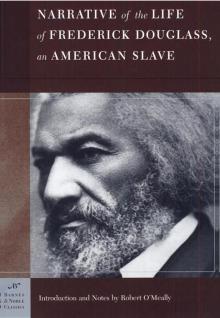 Narrative of the Life of Frederick Douglass: An American Slave
Narrative of the Life of Frederick Douglass: An American Slave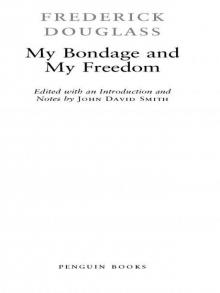 My Bondage and My Freedom
My Bondage and My Freedom Two Slave Rebellions at Sea
Two Slave Rebellions at Sea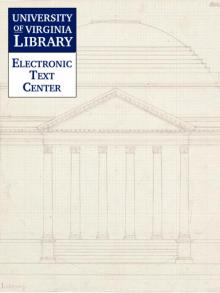 The Color Line in America
The Color Line in America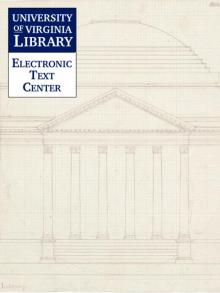 The Negro Exodus from the Gulf States
The Negro Exodus from the Gulf States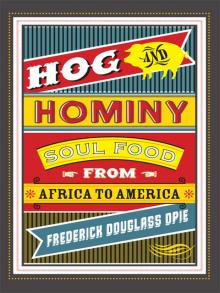 Hog and Hominy: Soul Food From Africa to America
Hog and Hominy: Soul Food From Africa to America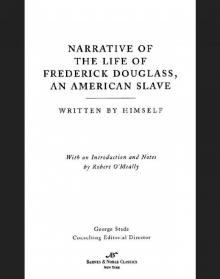 Narrative of the Life of Frederick Douglass
Narrative of the Life of Frederick Douglass![An Appeal to Congress for Impartial Suffrage [a machine-readable transcription] Read online](http://i1.bookreadfree.com/i/03/23/an_appeal_to_congress_for_impartial_suffrage_a_machine-readable_transcription_preview.jpg) An Appeal to Congress for Impartial Suffrage [a machine-readable transcription]
An Appeal to Congress for Impartial Suffrage [a machine-readable transcription]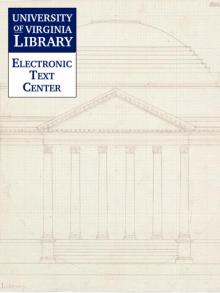 The Color Line
The Color Line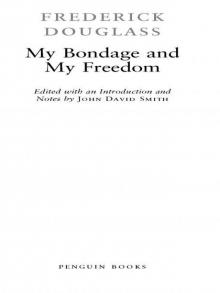 My Bondage and My Freedom (Penguin Classics)
My Bondage and My Freedom (Penguin Classics)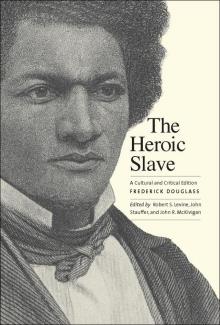 The Heroic Slave
The Heroic Slave